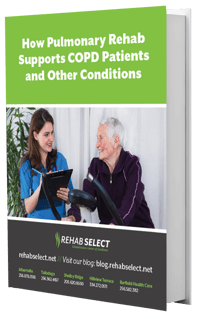Chronic Obstructive Pulmonary Disorders (COPD) affect 65 million sufferers worldwide, and over 16 million in the US alone. It’s clearly a serious global health issue. This disease, like many other lung diseases, is progressive and often only rears its head after many years. For this reason, the burden of managing the disease often falls to the senior populations, presenting even more challenges. Adding to the complications is that there is no cure for COPD, only treatment. The biggest tool in coping with COPD and other respiratory ailments is education. This guide aims to shed light on the scope of the health challenges, early warning signs, coping strategies, and treatment methods. To truly be effective at overcoming the challenges of COPD, a patient should work with a pulmonary rehab team who is experienced in managing health risks and designing a custom treatment plan. With so many options for treatment, patients may feel overwhelmed by choices. Read on to find out how to evaluate a pulmonary rehab program and start taking your life back today.
Your physician recommended pulmonary rehabilitation—now what? This comprehensive book sheds light on the complex health challenges and helps you navigate each stage of your therapy. Fill out the form to download our free guide to take charge of your own recovery today.
Click a link to go directly to a specific section.
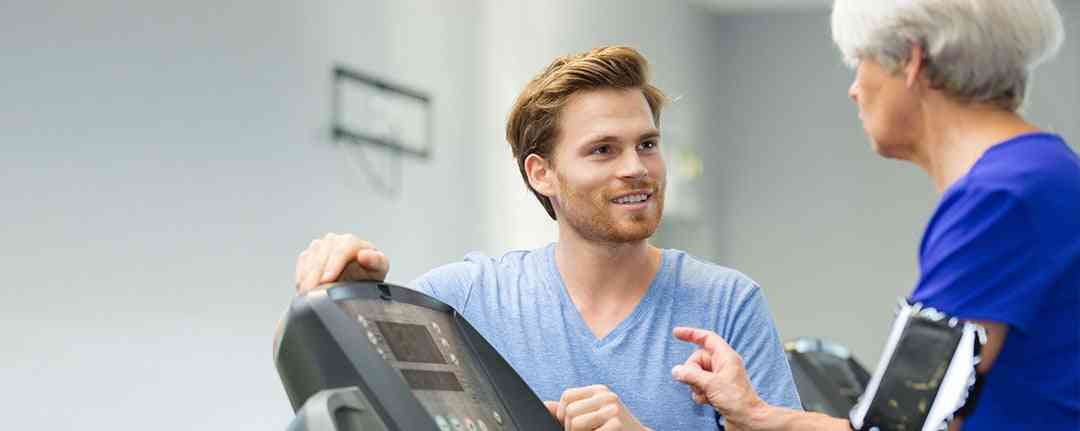
While you might have a vague idea about everything involved in pulmonary rehabilitation, let’s set a foundation for what is meant by this term and everything it encompasses.
In essence, pulmonary rehab serves to teach and train patients with chronic lung disease to breathe better. If you experience shortness of breath and medications have not significantly improved your symptoms, you might be a good candidate for pulmonary care.
A few conditions that often bring patients to pulmonary rehab include:
A pulmonary rehab program is typically designed to help you in several areas:
Before you even search for a program, here are a few things patients should know and expect from pulmonary rehab.
While breathing exercises are a part of pulmonary rehab, that’s not the only thing you’ll do there. A comprehensive treatment plan might include the following to not only improve your breathing but also your overall quality of life:
While exercise might seem difficult or even impossible with your lung condition, certain types of activity can be beneficial for lung and overall body function. Consistent exercise will build your stamina so you can go through your daily routine without the need to take as many breaks due to shortness of breath. By exercising during a pulmonary rehab program, your healthcare team can make sure you’re not overexerting yourself as well as monitor oxygen levels, heart rate, and blood pressure.
Similar to almost any area in life, you won’t see true improvement without consistency. Each session you attend and all of the exercises you do at home will have an accumulative effect on your overall health.
While chronic conditions such as COPD or cystic fibrosis are irreversible, that doesn’t mean you can’t take steps to slow the progression of your condition as well as improve your daily life. Not only will the techniques you learn in therapy impact physical health but also your mental well-being. Counseling can be added to your program so that you can better manage your relationship with lung disease. And finally, by making healthy lifestyle changes, you may see benefits in other areas of your life and potentially prevent other chronic diseases.
This one may be obvious, but it’s worth mentioning. Smoking is a major risk factor for lung disease and can make your condition worse. In fact, it’s the top cause of lung cancer and COPD deaths and the top cause of preventable disease and death in the world. If you’re still smoking when you start the program, your healthcare team will recommend that you quit and can even incorporate a smoking cessation program into your plan.
After rehab, there are a few measurable results you should expect to see. In order to know how much you’ve improved, your provider will take tests before, during, and after the program. Tests may include, lung function tests, walk tests, exercise capacity, heart rate, and blood pressure.
Beyond measurable results, patients often wonder what life will be like after discharge. Ideally, after rehab, patients will have a higher quality of life and the ability to do more than they were able to before completing the program.
In addition, throughout the program, you will learn exercises that you can continue at home after you’re done with the program. You can also follow up with your providers as needed to make sure you’re still properly managing your condition and maintaining the same results as when you finished the program.

With rates of pulmonary disease steadily making an increase, the need for pulmonary rehab services has perhaps never been more prominent. Just consider some statistics about this global healthcare concern. According to the Center for Disease Control and Prevention (CDC), rates of asthma in the US have increased by 28% since 2001, so that it now affects 1 in every 12 people. Lung cancer rates are increasing in women, and lung cancer remains a leading cause of death worldwide. The World Health Organization cautions that COPD rates will continue to rise globally in the coming years.
According to the American Lung Association, COPD is the third-leading cause of death among Americans, making it one of the most common reasons why people seek pulmonary care. While there is no cure for this disease, many measures can be taken to improve a patient’s quality of life. And because COPD doesn’t often appear until later in life, it’s most often seniors who are also facing other health challenges who must combat this disease.
This increase in respiratory disorders can be traced to several causes, including smoking, air pollution, and aging populations. Because the impact of smoking often takes years to manifest, we are just now seeing some of the repercussions of historical smoking trends in aging populations. Adding to this factor, the rising rates of air pollution have been driving up not only lung disorders but also exacerbations of conditions like asthma.
Respiratory rehab is now recognized as an essential part of the treatment for COPD, along with medications and oxygen therapy. In fact, respiratory rehab has been covered by Medicare since 2016. Without access to treatment, COPD patients may enter a vicious cycle, whereby they are hospitalized with an acute episode, get stable, then return home to be sedentary with shortness of breath, eventually worsening their condition. Pulmonary rehab disrupts this pattern by reducing hospitalizations. In fact, The 2019 Report on Global Strategy For Prevention, Diagnosis, and Management of COPD confirms that respiratory rehab within four weeks of a COPD exacerbation significantly reduced the frequency of hospitalizations. Furthermore, pulmonary rehab also helps patients better manage symptoms, lowers anxiety levels, and provides structured support for healthier lifestyle choices.
To maximize the benefits of any treatment program, it’s important to have a clear grasp of your goals for therapy. Not only do goals offer motivation to persevere with therapy but they also serve to keep a treatment team aligned.
To make sure that your objectives are effective and can be easily tracked, experts recommend creating SMART goals. You may have heard this term in other settings. The idea is that rehab goals should be specific, measurable, achievable, relevant, and timed—all terms which combine to form theacronym “SMART.” For example, maybe you want to be able to walk for 200m without a walker or reach a certain level of improvement on a lung function test. This is a milestone that can be accurately measured. Or perhaps you want to make sure the targets you set are relevant and achievable with the type of lung disease you have. It pays to have a rehab team that will be able to advise you on what goals are realistic for your current level of health.
It’s also helpful to keep in mind that there are four categories of goals specific to all pulmonary therapy patients:
Short-term goals – As the saying goes, you eat an elephant one bite at a time. For many patients, it can be overwhelming to start with ambitious targets. It’s much better to break goals down into smaller milestones. For instance, Laura Inverarity of Very Well Health writes, “If at the end of therapy your long-term goal is to walk 200 feet without an assistive device, make 2 short-term goals of 1) walking 200 feet with a cane, then 2) walking 100 feet without an assistive device. Finally progress to walking 200 feet with no device.”
Functional goals – These objectives relate to your day-to-day activities. For example, if your COPD is preventing you from walking upstairs to your bedroom, you might want to set a goal around building up your physical fitness with a supervised exercise program.
Impairment goals – Your rehabilitation program should include frequent measurements of your physical health, to make sure that the treatment is effective. These goals could be set with your rehab supervisor to examine all areas of your physical well-being that may be affected by your lung condition.
Goal-setting tends to be even more critical with pulmonary rehab patients because most lung disease and COPD is a lifelong condition, which requires evidence of progress for patients to stick with a therapy program. Such goal setting can help you avoid COPD depression and other psychological symptoms associated with the toll of a chronic disease.
Now that you have a clear understanding of the role of pulmonary rehab in treating lung diseases, let’s examine the basics of one disease that is treated most often: COPD. It’s a unique disease in that often takes years to manifest. COPD is characterized by progressive damage to the airways that carry air into the lungs, as well as to lung tissue. This damage gradually reduces pulmonary function, causing breathing difficulties.
Because COPD develops gradually over a number of years, its symptoms often go unrecognized until significant lung damage has already been done. This is unfortunate, since treatment can slow the progression of COPD, delaying its most debilitating effects, and the earlier that treatment begins, the better the results in terms of maintaining adequate lung function and a patient's quality of life. With that in mind, it’s wise to review the most common symptoms:
Other signs of COPD include edema – or fluid retention and swelling – in the feet and ankles, or a grayish or bluish tint in gums, lips, or fingernails.
Not all forms of COPD are the same though they may share some common signs. There are actually different variations of COPD, including three main types, and, in fact, some patients will be diagnosed with more than one type.
Chronic bronchitis – This type of COPD occurs when the lining of your bronchial tubes, which carry air back and forth from your lungs, becomes inflamed. While acute bronchitis is often the result of a respiratory infection, chronic bronchitis is usually caused by smoking.
Although none of these conditions can be cured, there are steps you can take to improve symptoms and enhance your quality of life.
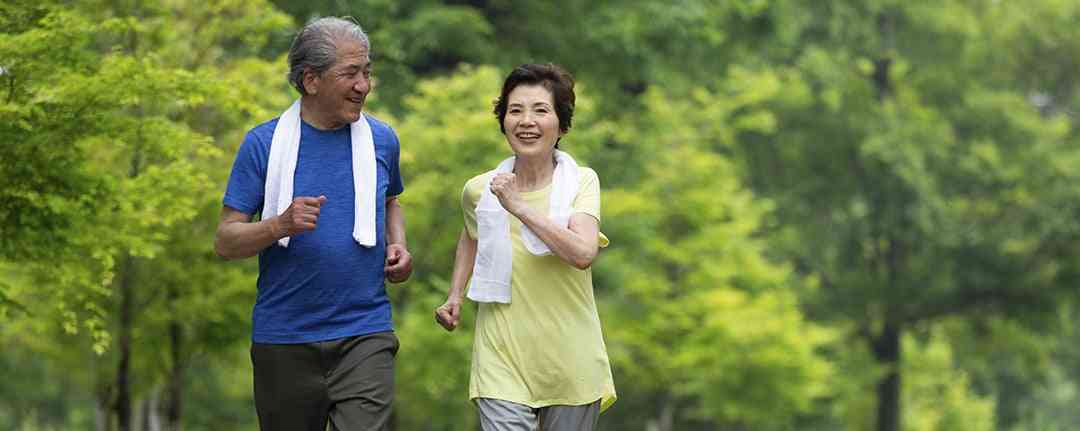
For patients with COPD, the challenges are vast. There are ways to slow COPD with early treatment. That’s why it’s important to consider the most immediate things someone suffering from COPD can do to slow the progression of the disease. In general, the first four steps to take are as follows: avoid or quit smoking, make exercise a priority, achieve a healthy weight, and develop better breathing techniques.
Learning how to effectively cope with the disease in ways that can mitigate symptoms will have an overall positive effect on your psychological well-being and lifestyle.
Sitting on the couch is not an option with COPD. You must exercise in order to improve breathing so that you can cope with limitations. Whether you're admitted to a skilled nursing facility for pulmonary rehabilitation as an inpatient or you participate as an outpatient, you will be taught how to exercise and improve your physical fitness without risking shortness of breath. Your oxygen level, blood pressure, and heart rate should be monitored as you exercise. Any person with COPD should keep emergency tools close by, for example, an inhaler or even portable oxygen, plus a phone or remote panic button.
This type of treatment has momentum: as you get more physically fit, shortness of breath usually becomes less of a problem, allowing you to continue to increase physical activity.
During pulmonary rehabilitation, you’ll have access to an exercise physiologist, physical therapist, and other exercise specialists to help you develop and master your exercise program. Additionally, you’ll be taught how to continue your exercise program at home once you are discharged.
Exercise has an important link to managing another symptom of COPD—anxiety. When you exercise, you release "feel good" hormones called endorphins, which naturally boost your mood. As you continue, you should also feel better simply because you see yourself getting stronger.
It’s quite natural for COPD sufferers to struggle with anxiety as they manage the symptoms of the disease. The decline in oxygen levels that occurs with breathlessness triggers a stress response in the body. That stress response typically makes breathing even more difficult, which causes greater anxiety and can quickly become a dangerous cycle.
In a person who has COPD, frequent episodes of breathing difficulty can even cause the suffocation response to become overly sensitive, prompting frequent bouts of anxiety or chronic underlying anxiety. Then, even small changes in the environment, such as a strong odor, or everyday minor stresses, like feeling rushed, can trigger the suffocation reaction.
It's easy to see how all of this can take a severe toll on a person's health and quality of life; however, with coping techniques, COPD patients can practice learning to control anxiety on a daily basis. “Breathing retraining” can help, which is learning how to gain control of breathing during episodes of breathlessness with breathing techniques, such as pursed-lip breathing. Using such techniques can slow breathing, help keep airways open longer, and promote relaxation, easing breathlessness, and the feelings of panic that come with it.
You might be surprised to learn that diet can have a formidable impact on this lung disease. Treating breathlessness from COPD can be more problematic with overweight patients, and many work with a nutritional therapist. In these cases, a COPD diet plan will include nutrients that promote healthy breathing, fight infection, and help the patient maintain a healthy weight. COPD patients must also eat enough calories to manufacture the energy needed to prevent any weakening of pulmonary muscles and the diaphragm. Check out this list of nutritional guidelines to keep in mind:![]()
Coping with COPD will always come down to breathing easier. To achieve this means taking good care of yourself and keeping your environment as free as possible of irritants. Here are seven ways that you can begin to take back your health and experience better breathing. Use this checklist as a guide:
By taking such measures, seeing your doctor regularly, and carefully following a treatment plan, you can learn to manage your symptoms and improve your quality of life.
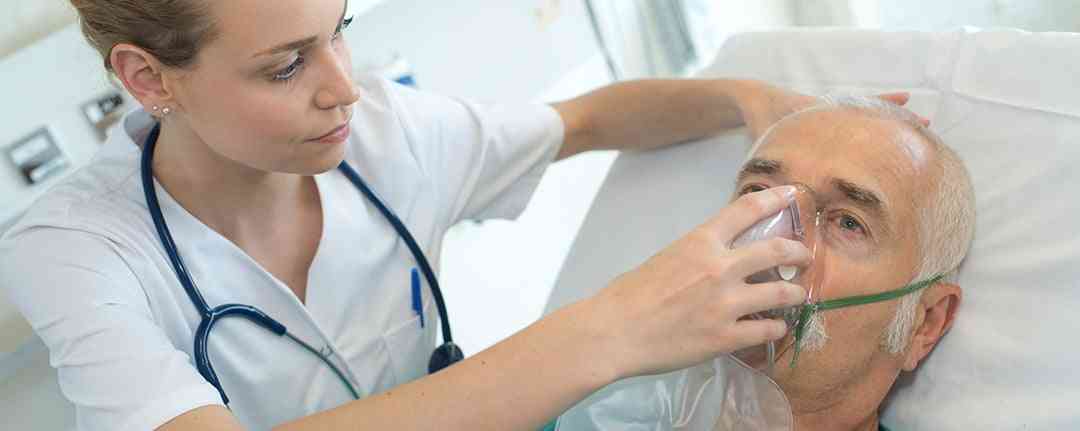
Treatment for COPD is not something to undertake alone. A pulmonary rehab program is designed especially for you based upon your current needs. Therapists with special training in occupational, physical, and respiratory therapy will teach you skills that are custom-designed to fit you and your current needs and symptoms.
You might be wondering what to expect from pulmonary rehab therapy. We’ve got you covered. The first thing you should be prepared for is to talk about your current lifestyle and goals. Team members will take a comprehensive health history in order to more effectively design a treatment plan. You'll also learn about various means of coping with symptoms. Breathing techniques, medications, oxygen supplementation, diet, and relaxation techniques can all help you do more with fewer episodes of shortness of breath. You'll also be taught how to avoid exacerbations or flare ups that happen when COPD gets worse and you become sick.
As part of a comprehensive treatment plan, patients can expect pulmonary rehab programs to address some or all of the following five areas:
Understandably, COPD patients may be apprehensive about exercising. Some of this can be alleviated by asking proactive questions prior to engaging in a physical therapy routine. Use this checklist as a guide.
The benefits of working with a specialized team who can measure and monitor your progress cannot be overstated. As discussed previously, COPD rehabilitation improves your physical capacity, including aerobic and muscle conditioning. You may also notice some other benefits as your body adapts your new routine:
For many patients, longer treatment plans create better, cumulative results. Even after your rehabilitation, you may benefit from ongoing support.
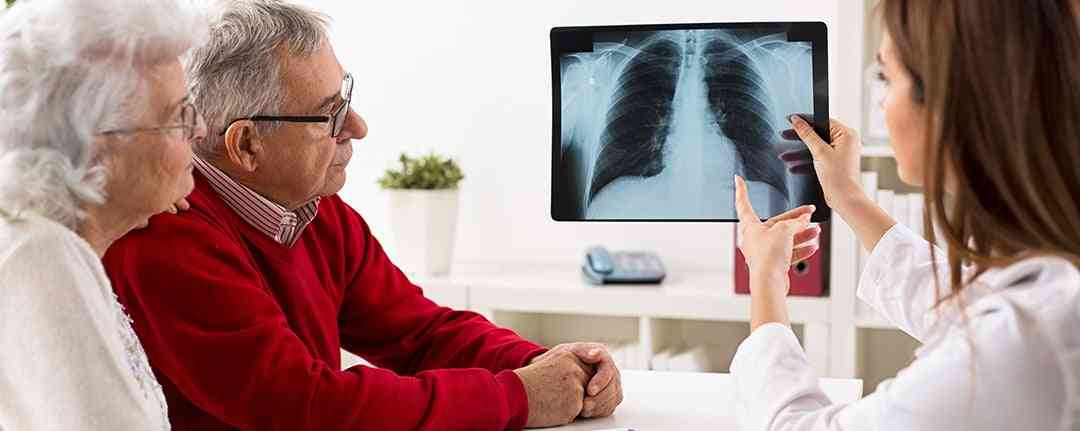
Ongoing support is crucial for COPD patients who fare best when they continue to implement lifestyle changes on their own at home. For this reason, patient education is absolutely essential to long-term success. One of the best things to implement is a regular at-home regimen of the following best practices.
Pulmonary rehab training includes exercises that teach more effective ways to breathe, such as pursed-lip breathing, diaphragmatic breathing, and controlled coughs. Here are some techniques that can be continued at home:
Pursed-lip breathing exercise:
Diaphragmatic breathing exercise:
Controlled coughs:
Weight management is important for those living with pulmonary conditions. In some cases, patients can become underweight as their body fights the illness. A doctor may suggest a special diet and supplemental nutrition to increase body weight. Overweight people are encouraged to drop pounds because being overweight makes breathing more difficult.
COPD is a wake-up call to get moving, albeit in a smart way. Exercise sessions may only be five minutes at first, but over time, patients should aim for 20 to 30 minutes of activity, three or four times a week. Exercises that can be continued at home include:
Note that individuals with COPD should always walk with a person aware of their condition—this “buddy” would be on hand to supply emergency assistance if needed.
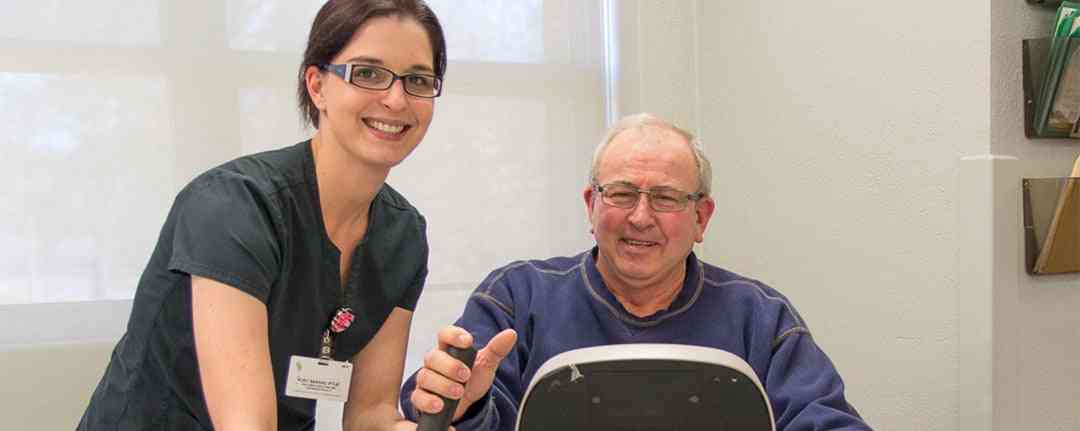
Pulmonary rehab can be offered as an outpatient program in a hospital, or at a specialized pulmonary rehab center. These centers offer the resources, personnel, and facilities needed to help improve the symptoms of chronic lung conditions. At this point, you may be asking the question, “How do I choose a pulmonary rehab facility?”
Your choice of rehab facilities is something that should not be taken lightly. Not only do you want to consider the quality of care, but you need to make decisions about your needs as well.
Some important factors to consider when choosing a rehab facility include:
With such a wide variety of treatment centers available, it can be tough to know what to look for. That’s why we devised this list of five qualities to look for in a pulmonary rehab center:
The Rehab Select pulmonary therapy program reflects our fundamental belief that rehab treatment must put the patient first. It’s perfect for people with chronic lung disease (or those preparing for or recovering from lung surgery) who are not well enough to go home and fend for themselves, but too well to be in a hospital ward.
Before starting pulmonary therapy, your physical therapist will guide you through a complete physical assessment, including a six-minute walk, standing and sitting, and a respiratory questionnaire. We will measure your results and track your progress as you complete your rehab program.
Using the results of your assessment, your medical history, and your preferences, the Rehab Select Care Team will put together an individual pulmonary therapy plan for you.
We take a three-pronged approach to pulmonary rehab:
Our highly qualified staff of lung rehabilitation specialists includes in-house physicians or pulmonary physicians, pulmonary nurse practitioners, nursing staff, physical therapists, occupational therapists, speech therapists, pharmacists, and nutritionists. Every healthcare provider who works with us offers a caring and compassionate approach, coupled with extensive expertise.
People with COPD need to see a doctor regularly, even when they feel fine. Monitoring lung function is a significant part of managing the illness. Combined with drug therapy and flu vaccinations, lifestyle changes improve the quality of life for anyone living with pulmonary conditions. In a study published in the European Respiratory Journal, researchers found that pulmonary rehab “was effective in improvement of exercise tolerance, lung mechanics and quality of life in all stages [of COPD]”. Selecting the right pulmonary rehab program is critical to your success. Learn more about how Rehab Select creates a unique rehabilitation treatment for every patient we work with, designed to take your comfort and well-being into account every step of the way.
